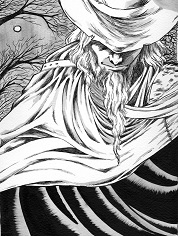For every two things, there is a relationship of sorts
The relationship is such that either both things depend on something 'outside' of themselves (in the prior example, the dependency would involve space, a separate thing) or one of the things is caused by the other
1) Wrong. Paired photons are nonlocally but causally connected. If two were “a million miles apart via space”, their “relation” depend upon space as in your example, but their dynamics would also depend upon one another as the actions of both are caused by both at the same time.
2) Spacetime precludes any dependence upon space and makes causal relations such as those you speak of either wrong, irrelevant, or flawed.
3) QM does the same.
4) Relations in logic & mathematics are special kinds of mappings or functions (or rather, mappings are special kinds of relations) that “relate” one of (possibly infinite) elements in a set X with one of (possibly infinite) elements either in the same set or in another set Y. For example, given the set F of all fathers f and the set C of all children c, fRc can mean “f is the father of c” where f & c are particular elements of the sets F and C, respectively. Relations on a set (i.e., not between two sets) are important enough that they amount to most of what most people ever learn about mathematics. For example, the relation R on N (or other sets of numbers: rationals, reals, complex, etc.) defined s.t. for any pair a & b of elements of N, aRb is equivalent to bRa iff [if and only if] R is symmetric. Alternatively, for any relation R if aRb implies bRa, then R is a symmetric relation.
Given any finite set S, the number of possible relations is
. The proof of this follows from the proof that the power set of any finite set A has a cardinality 2^|A|. Because the power set is all possible subsets of A and a relation R on A consists of all possible pairs (x,y) ∈ A x A, the number of relations is |P(A)| * |P(A)| or the square of the cardinality of the power set of A.
5) For every infinite set א
n, any relation R on that set is also infinite, though not necessarily greater than the set (e.g., a relation on N → N x N is one-to-one).
6) There is no relation R such that for any pair of elements (m,n), from any set M or sets M & N, mRn can be defined to require any element other than the pair (m,n)
7) Let R be a causal/causality relationship on the set of U (assume for arguments sake that U is formally defined and causality is sufficiently rigorously defined to express as a relation on U, despite the fact that in the proof neither of these things are in fact true). If it is possible to have mRn OR nRm, than R is symmetric. Therefore, for any elements whatsoever in U, to say “a causes be” is equivalent to saying “b causes a”. Whatever disagreements exist among scientists, philosophers, and so forth, such a definition is so completely antithetical to causality that we can safely reject it.
8) For the relation R on U to have meaning, we’d have to know whether U is finite (in which case we can know exactly how many relations are possible) or infinite. We don’t.
Take for example the colour red, and the song of a bird. It might seem as though there is no relationship between them. However, something makes the colour red not the song of a bird and the song of a bird not the colour red.
Ignoring the conflations of properties with things, the relationship in question is non-equivalence. Put differently, given a set S and a relation R on S, R is antisymmetric if for any (x,y) ∈ S, aRb and bRa implies a=b (i.e., aRb != to bRa unless a and b are the same thing or are equal/equivalent). However, as the causality relation was already defined as symmetric (and thus also necessarily transitive and reflexive, meaning it is an equivalence relation), for any pair of elements (m,n) ∈ U, if m is not equivalent to n (i.e., they are different elements of U), then m causes n and vice versa.
There cannot be two uncaused causes, since, as stated, for every two things, there is a relationship between the two things.
As stated, for every two things there are multiple relationships, and there is nothing whatsoever to limit the number of relations to those given (particularly as they are not well-defined, nor is the set U, etc.). However, if all the notational and logical problems were fixed, the entirety of the proof would depend upon the assumption that for the set U there exists whatever relations we end up with were we to fix mess that makes up the set, its elements, and R, we’d end up with a premise. In other words, if there were no problems with the way R and U and so forth are defined, this isn’t a proof but an assumption.
Observe:
Let U be the set of all unicorns. For every (m,n) ∈ U, mRn means m is the god of n.
I’ve proven that I can write letters and use some math notation, but I haven’t proven anything relating to my argument, including that unicorns exist.
An uncaused cause implies no dependency
However, you have defined your relation as two relations. Nothing can be implied from this. Moreover, the closest you come to “proving” that their must exist either a causal or non-causal relationship between any two elements of the set U is by defining a “non-equivalence’ relation on U such that two different elements are different. This has nothing to do with dependency nor causality.
More importantly, the set U consists of “concepts that exist in reality”. Imagining that this were not basically a contradiction in terms (concepts don’t exist in reality by definition, as they are abstract classes to which things in reality belong; the concept “chair” doesn’t exist in reality, but multiple chairs do, each an instance of the concept but none being the concept), we’re left with a problem. Properties exist in reality. Consider the property of identity, i.e., that a thing is itself (you are you and not someone else, and I am me). Your non-equivalence relation doesn’t hold here, but neither is there something that causes me to be me or you to be you.
Furthermore, there must be at least one uncaused cause because otherwise, we would have a universe of just dependencies on other things and this cannot exist.
A perfect example of why this is just a series of claims. The assertion “this cannot exist” is not anywhere shown to be true, in part because your ill-defined set and your relation that is really two ill-defined relations do not indicate anything about dependency or causes. Your verbal argument simply asserts nonsense about these things but doesn’t show that they are true (whatever it is you mean dependency and relation to mean, everything you say about them is assumed not proven).



